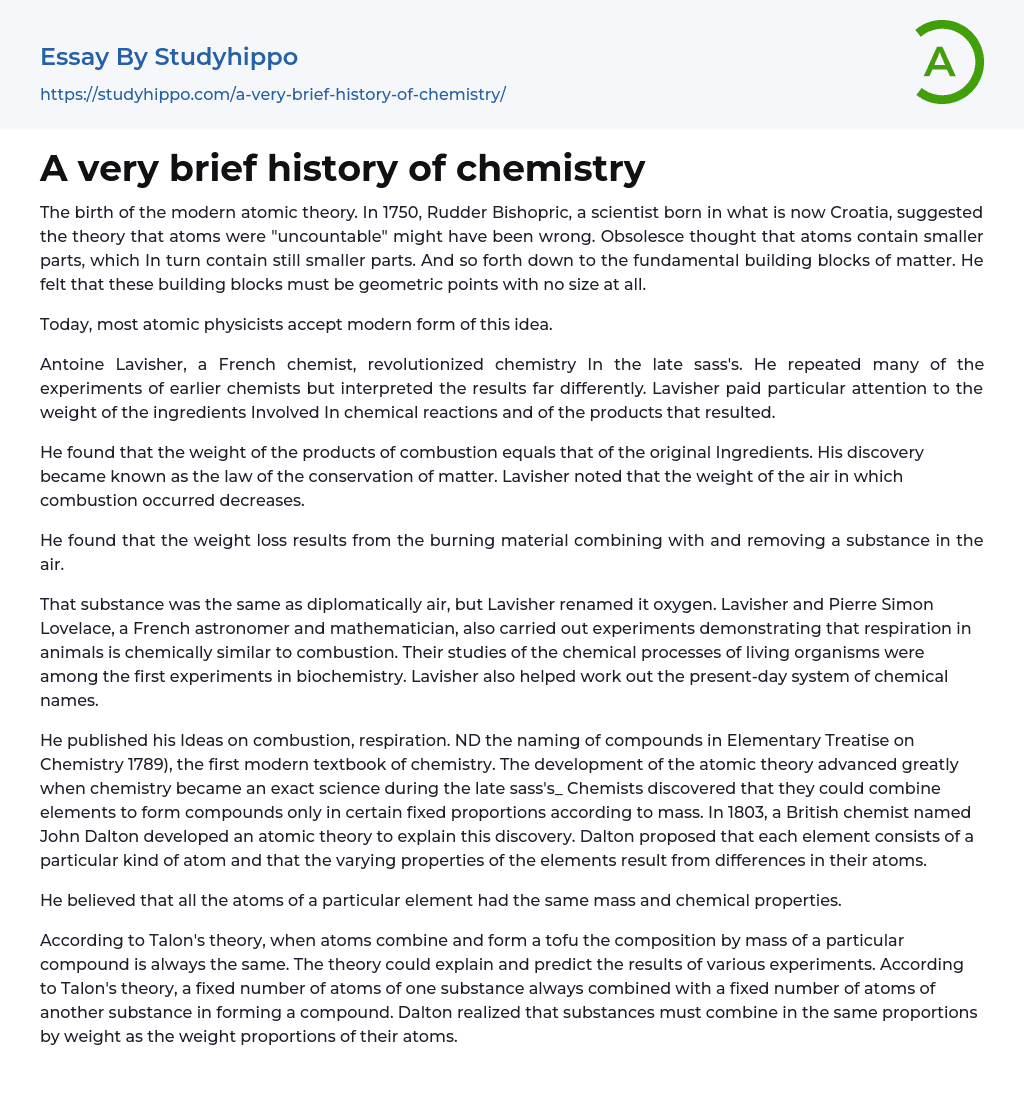In 1750, Rudder Bishopric challenged the theory that atoms were "uncountable" by proposing that atoms could contain smaller parts, leading down to fundamental building blocks of matter that must be geometric points with no size. Today, many atomic physicists accept this modern idea. In the late 1700s, French chemist Antoine Lavoisier revolutionized chemistry by interpreting experiment results differently and paying particular attention to weight in chemical reactions. He discovered the law of the conservation of matter, noting that the weight loss in combustion occurred when a substance in the air combined with burning materials. He renamed this substance oxygen and found that respiration in animals is chemically similar to combustion. Lavoisier worked with French astronomer and mathematician Pierre Simon Lovelace on these experiments.Among the pioneer experiments in biochemistry were their studies on
...the chemical processes of living organisms. Lavisher contributed to the development of the present-day system of chemical names. He also authored an Elementary Treatise on Chemistry in 1789, which was the first modern chemistry textbook and included his thoughts on combustion, respiration, and compound naming. Chemistry became an exact science in the late 19th century, and chemists discovered that combining elements could only be done in specific fixed mass proportions. John Dalton, a British chemist in 1803, developed an atomic theory to explain this discovery. According to Dalton, every element has a unique type of atom, and element properties differ due to differences in their atoms. Each atom of an element shares the same mass and chemical characteristics according to Dalton. Talon's theory proposed that during the formation of a compound, a fixed amount of atoms always combine with a fixed number fro
another substance. Dalton learned that substances must combine in weight proportions identical to their atom weight proportions.
The law of definite proportions, which states that pure substances combine in fixed proportions, was observed by chemists. Talon's theory explained this phenomenon, leading to its gradual acceptance. In 1814, Swedish chemist Sons J. Berkelium established accurate atomic weights for several elements and introduced the use of alphabet letters as symbols for elements. Independently, a Russian chemist named Dimmit Mendel and a German chemist named Julius Lothario Meyer discovered the periodic law in 1869. The law states that when elements are arranged based on their atomic weights, those with similar properties appear at regular intervals or periods. They arranged the table in columns grouping elements with comparable properties and left gaps, which Mendel predicted would be filled by elements with specific characteristics. The modern periodic table is a guide to the chemistry of all known elements.
- Organic Chemistry essays
- Acid essays
- Calcium essays
- Chemical Bond essays
- Chemical Reaction essays
- Chromatography essays
- Ethanol essays
- Hydrogen essays
- Periodic Table essays
- Titration essays
- Chemical reactions essays
- Osmosis essays
- Carbohydrate essays
- Carbon essays
- Ph essays
- Diffusion essays
- Copper essays
- Salt essays
- Concentration essays
- Sodium essays
- Distillation essays
- Amylase essays
- Magnesium essays
- Acid Rain essays
- Russian Empire essays
- Ancient Greece essays
- British Empire essays
- Historical Figures essays
- Nazi Germany essays
- Roman Empire essays
- War essays
- Revolution essays
- 19Th Century essays
- Historiography essays
- History of the United States essays
- 20Th Century essays
- World History essays
- Vikings essays
- Declaration of Independence essays
- Civilization essays
- Evidence essays
- Genocide essays
- Colonialism essays
- Rebellion essays
- 1960S essays
- 1920S essays
- 1950S essays
- Letter from Birmingham Jail essays
- Louisiana Purchase essays
- The Columbian Exchange essays




